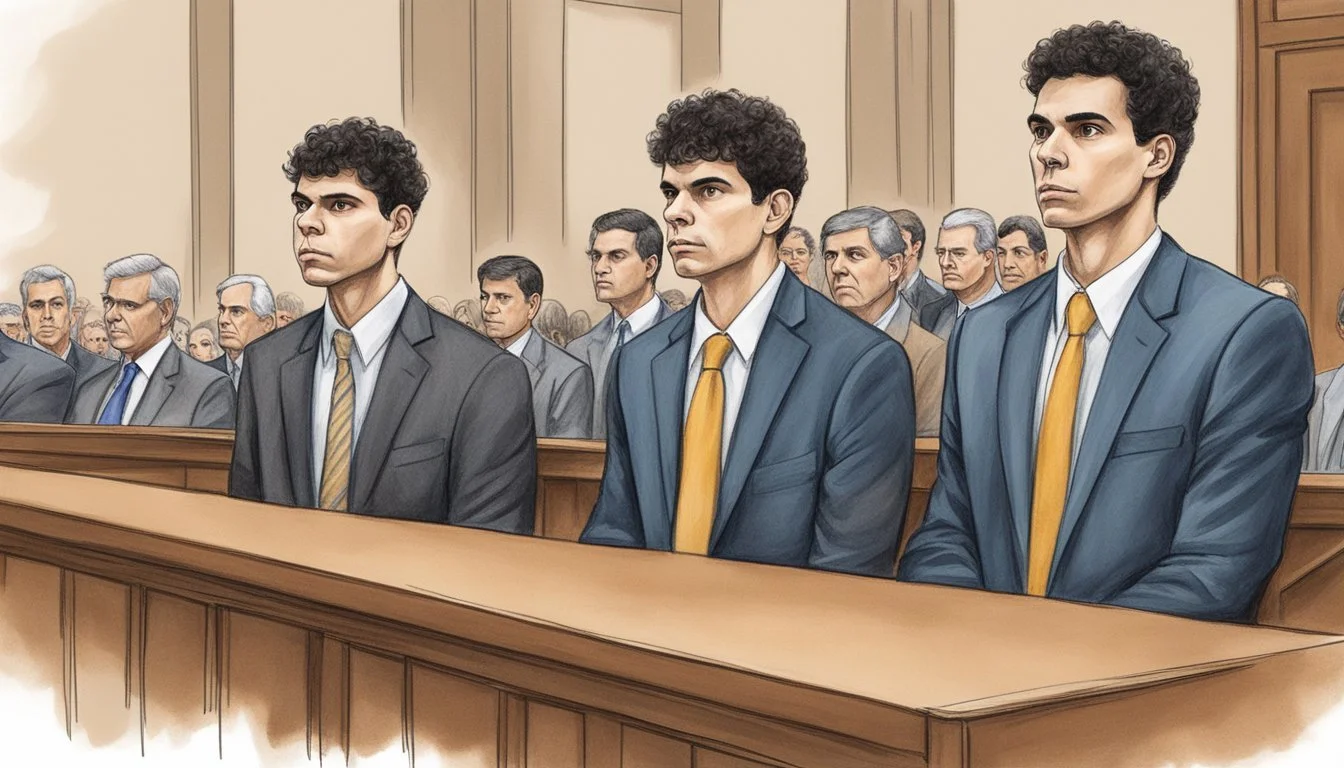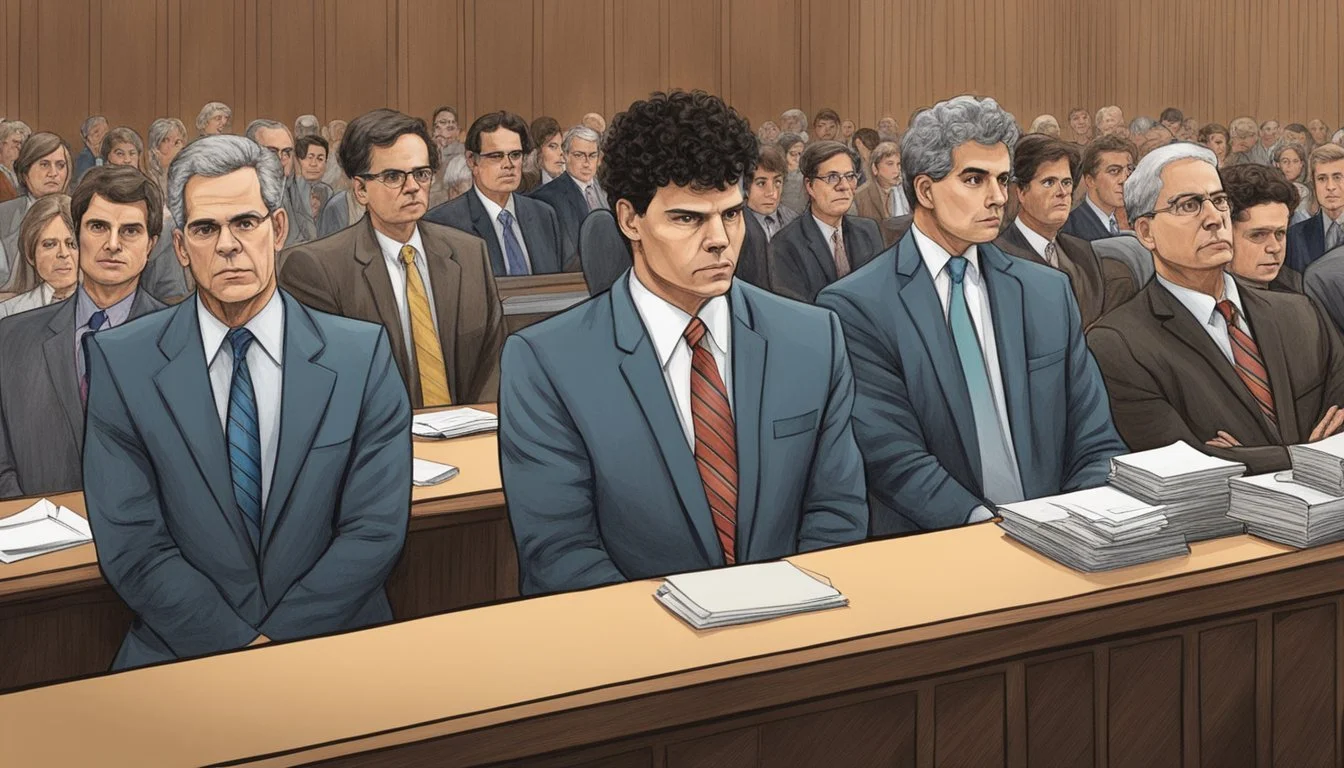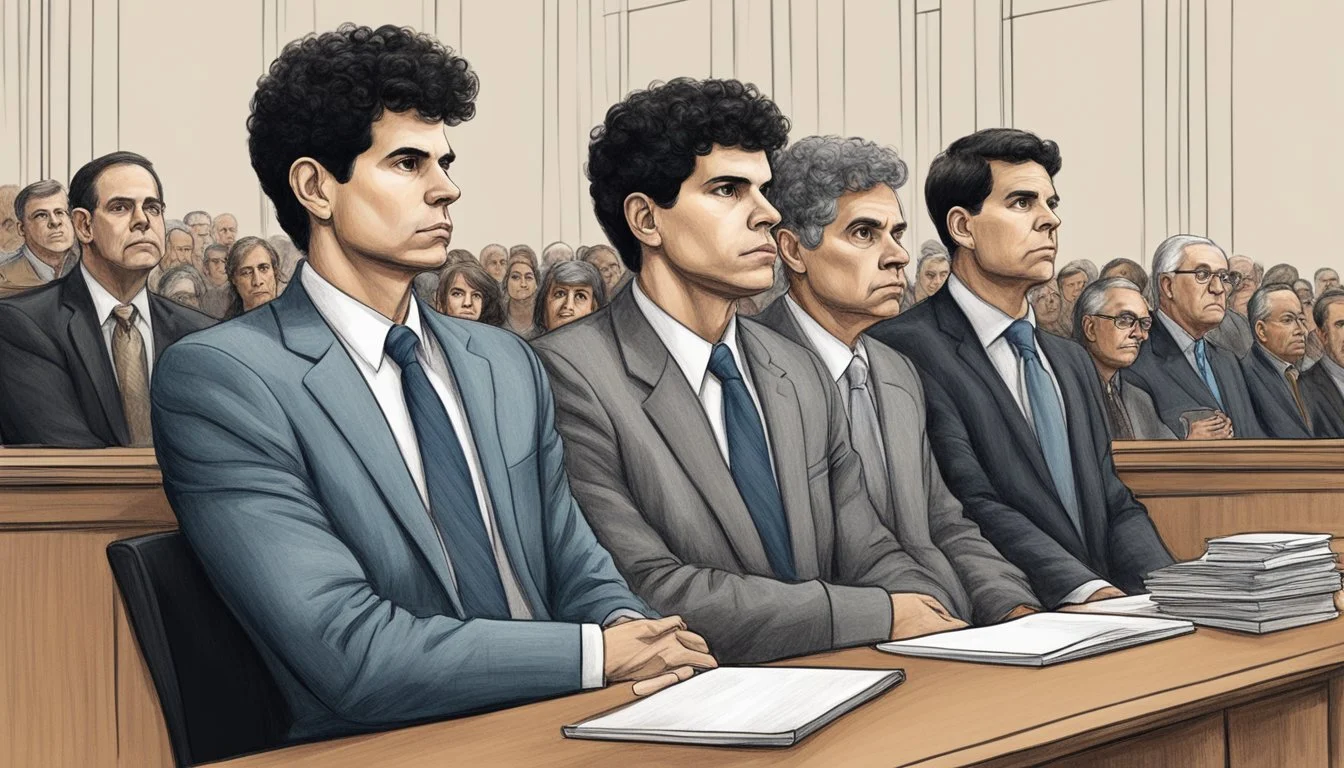Fashion as Evidence: The Menendez Brothers' Appearance in Court
Impact on Jury Perception
The Menendez brothers' trial captivated the nation in the early 1990s, not just for the shocking nature of their crime, but also for their appearance in court. Lyle and Erik Menendez, accused of murdering their wealthy parents, became unexpected fashion icons during their high-profile legal proceedings. Their choice of clothing, particularly their signature cable-knit sweaters, became a focal point of media attention and public fascination.
This sartorial element of the case has recently resurfaced in popular culture, thanks to Netflix's documentary series "Monsters: The Lyle and Erik Menendez Story." The show explores various aspects of the trial, including the brothers' courtroom attire and its impact on public perception. Their fashion choices during the trial have become emblematic of the era and continue to spark discussions about the role of appearance in high-profile legal cases.
Background of the Menendez Family
The Menendez family was a wealthy, seemingly picture-perfect household living in Beverly Hills. Their lives took a dark turn when brothers Lyle and Erik Menendez murdered their parents in 1989.
The Menendez Household
Jose Menendez, a Cuban immigrant, rose to become a successful entertainment executive. He married Mary Louise "Kitty" Andersen in 1963. The couple raised their two sons in a luxurious Beverly Hills mansion.
Jose was known for his strict parenting and high expectations. Kitty, a former beauty queen, struggled with depression and substance abuse. Their marriage was reportedly turbulent.
The family's affluent lifestyle masked deep-rooted issues. Jose's demanding nature and Kitty's emotional instability created a tense home environment.
Early Life of Lyle and Erik Menendez
Lyle Menendez was born in 1968, followed by Erik in 1970. The brothers grew up in privilege, attending elite schools and enjoying expensive hobbies.
Despite their wealth, the Menendez brothers faced intense pressure from their father. Jose pushed them to excel academically and athletically. This led to feelings of inadequacy and resentment.
The brothers were close but exhibited behavioral problems. Lyle struggled with learning difficulties, while Erik dealt with anxiety. Both boys later claimed they suffered sexual abuse at the hands of their father.
Their relationship with their mother was complex. Kitty was often emotionally distant, leaving the boys feeling neglected and unsupported.
The Crimes and Initial Investigation
The Menendez brothers' case began with a shocking double murder in Beverly Hills and unraveled through a complex investigation. Key events included the night of the killings, evidence collection, and the brothers' eventual arrest.
The Night of the Murder
On August 20, 1989, Jose and Kitty Menendez were shot multiple times in their Beverly Hills mansion. The couple was watching TV in their den when the attack occurred. Lyle, 21, and Erik, 18, claimed they discovered their parents' bodies after returning from a movie.
They called 911, appearing distraught. Initially, investigators considered the possibility of a mob hit due to Jose's business connections. The brothers' behavior in the aftermath raised some suspicions, but they were not immediately suspects.
Evidence and Arrest
The investigation took months to build a case against Lyle and Erik. Key evidence included:
Shotgun shells matching those used in the murders
Suspicious spending sprees by the brothers
Inconsistencies in their alibis
A breakthrough came when Erik confessed to his psychologist. The therapist's girlfriend overheard and informed police. In March 1990, Lyle was arrested. Erik turned himself in days later.
Both brothers were charged with first-degree murder. The case gained national attention, becoming one of the most high-profile trials of the 1990s. The prosecution argued the motive was inheritance, while the defense later claimed abuse.
The Legal Proceedings
The Menendez brothers' case involved two high-profile trials that captured widespread public attention. These proceedings spanned several years and resulted in dramatic courtroom moments.
First Trial and Mistrial
The initial trial began in 1993 and was televised, drawing significant media coverage. Lyle and Erik Menendez faced separate juries but were tried simultaneously. The brothers' defense team argued they had acted in self-defense after years of abuse.
During the trial, the Menendez brothers gave emotional testimony about alleged sexual and physical abuse by their father. This testimony polarized public opinion. Some viewers sympathized with the brothers, while others remained skeptical.
After months of proceedings, both juries deadlocked. The judge declared a mistrial in January 1994. This outcome left the case unresolved and set the stage for a retrial.
The Retrial and Convictions
The retrial commenced in 1995 with key changes. This time, Lyle and Erik Menendez were tried together before a single jury. The judge also placed restrictions on testimony about alleged abuse.
Prosecutors portrayed the brothers as cold-blooded killers motivated by greed. They emphasized the brutal nature of the crime and challenged the abuse claims.
In March 1996, the jury found Lyle and Erik Menendez guilty of first-degree murder. The brothers were convicted on all charges. In July 1996, they received life sentences without the possibility of parole.
The verdicts marked the end of a lengthy legal saga that had gripped the nation's attention for years.
Defense and Prosecution Narratives
The Menendez brothers' trial featured contrasting narratives from the defense and prosecution. These narratives shaped how the defendants were perceived in court and influenced public opinion.
Claims of Abuse
The defense attorneys argued that Lyle and Erik Menendez were victims of long-term abuse. They claimed the brothers had endured sexual and emotional abuse at the hands of their father, Jose Menendez. This abuse, the defense asserted, led to a state of fear and trauma.
The lawyers presented evidence of the alleged abuse, including testimony from family members and psychologists. They argued that the killings were an act of self-defense, stemming from the brothers' belief that their lives were in danger.
Some evidence of abuse was reportedly kept from jurors in the initial trial. This became a point of contention in later appeals and public discussions about the case.
Argument for Premeditation
Prosecutors painted a different picture of the Menendez brothers. They argued that the killings were premeditated acts motivated by greed and a desire to inherit the family fortune.
The prosecution highlighted evidence of planning, such as the purchase of shotguns and the creation of an alibi. They pointed to the brothers' lavish spending after the murders as proof of their true motives.
Prosecutors emphasized the brutality of the crime, describing how Jose and Kitty Menendez were shot multiple times at close range. This, they argued, contradicted claims of self-defense or a heat-of-the-moment reaction.
The prosecution's narrative focused on portraying Lyle and Erik as cold, calculating killers who had orchestrated the murders for financial gain.
The Impact on Society and Media
The Menendez brothers' case captivated the public and left an indelible mark on popular culture. Their televised trial became a media sensation, sparking debates and influencing public opinion.
Public and Media Reception
The Menendez brothers' trial garnered unprecedented attention. Televised proceedings allowed millions to watch the courtroom drama unfold in real-time. This exposure led to intense public scrutiny and divided opinions on the brothers' guilt or innocence.
Media coverage was extensive, with news outlets providing round-the-clock updates. The case became a hot topic for talk shows and late-night comedians. Public fascination with the trial rivaled that of other high-profile cases of the era.
The brothers' appearance and demeanor in court became subjects of intense analysis. Their designer suits and stoic expressions fueled discussions about their character and motives.
Cultural Representations
The Menendez case has been reimagined in various forms of media. TV movies, documentaries, and books have explored different aspects of the brothers' story. Ryan Murphy's "American Crime Story" franchise considered adapting the case for television.
Netflix released a documentary series examining the trial and its aftermath. This renewed interest in the case for a new generation of viewers. Social media platforms have seen a surge in discussions about the brothers, with some advocating for their release.
Popular culture references to the Menendez brothers have appeared in music, fashion, and even memes. Kim Kardashian wore a vintage Menudo t-shirt featuring the brothers, sparking controversy and debate.
Post-Conviction and Current Status
The Menendez brothers have spent decades in prison following their convictions. Recent legal developments have opened the possibility of resentencing, potentially altering their life sentences.
Life Behind Bars
Lyle and Erik Menendez have been incarcerated since 1996. Initially separated, they were reunited at Richard J. Donovan Correctional Facility in San Diego in 2018. The brothers have adapted to prison life, participating in rehabilitation programs and maintaining connections with supporters.
They've pursued education and engaged in various activities. Lyle has worked as a tutor and completed a business degree. Erik has focused on art and writing, creating greeting cards and authoring a book on Cuban history.
Legal Developments and Resentencing
In 2023, Los Angeles District Attorney George Gascón recommended resentencing for the Menendez brothers. This decision came after new evidence supporting their claims of childhood abuse emerged. The resentencing could potentially lead to their release from prison.
The brothers' legal team filed a habeas petition, citing the new evidence and changes in California law regarding child abuse victims. If resentenced, they may become eligible for parole, marking a significant shift from their current life sentences without parole.
This development has sparked debate about rehabilitation, moral obligations, and the justice system's response to new evidence in decades-old cases.







